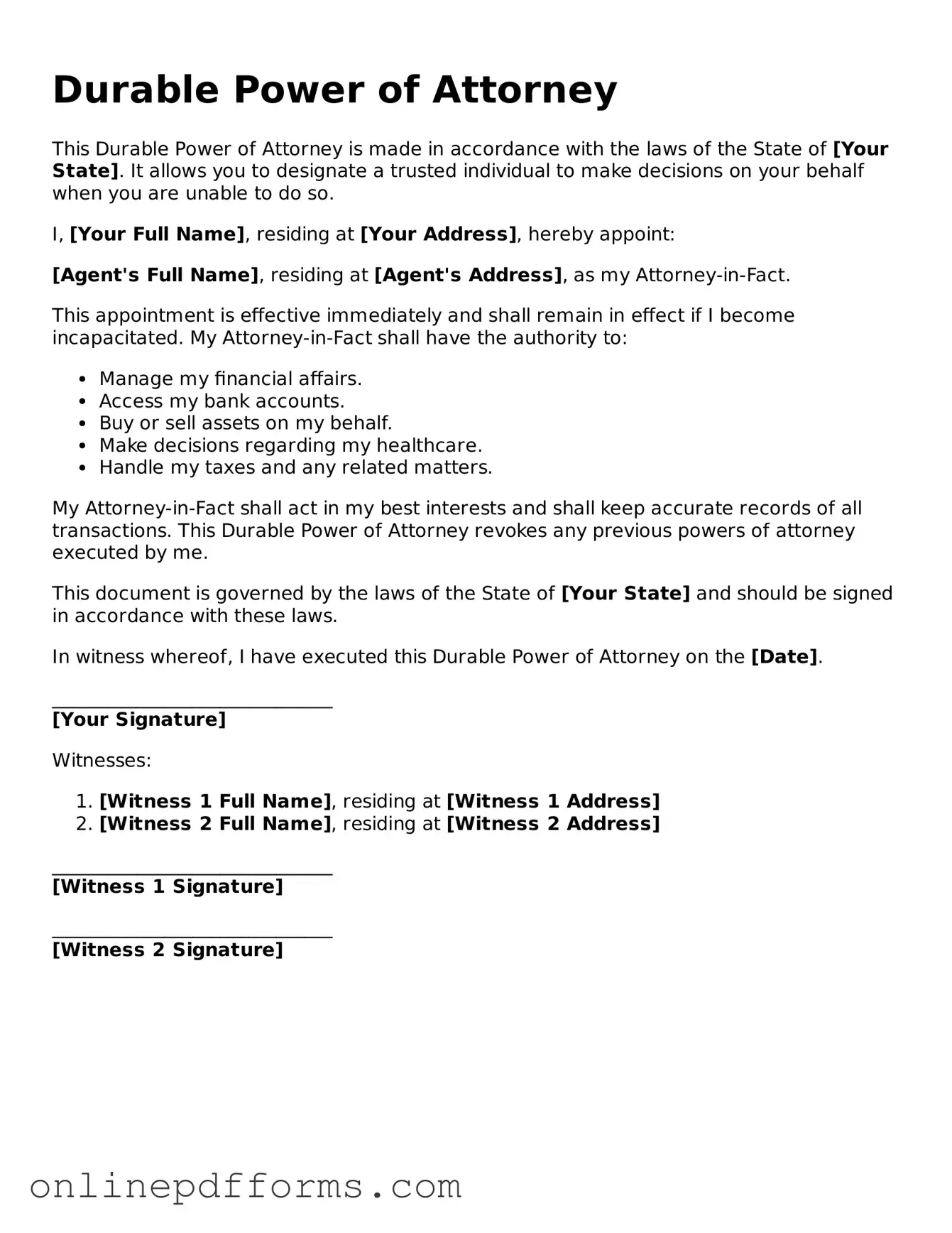A Healthcare Power of Attorney is a document that allows an individual to designate someone to make medical decisions on their behalf if they become unable to do so. Like a Durable Power of Attorney, this form empowers a trusted person to act in the best interest of the individual. Both documents require careful consideration of whom to appoint, as the chosen agent will have significant authority over important decisions. While a Durable Power of Attorney typically covers financial matters, the Healthcare Power of Attorney focuses specifically on health-related decisions, ensuring that medical preferences are honored when the individual cannot communicate them directly.
A Living Will is another important document that complements the Durable Power of Attorney. This legal document outlines an individual’s preferences regarding end-of-life care and medical treatments. While a Durable Power of Attorney grants authority to an agent to make decisions, a Living Will provides clear instructions about the types of medical interventions a person does or does not want. Both documents serve to protect an individual's wishes and ensure that their values are respected in times of medical crisis.
A Revocable Trust is similar to a Durable Power of Attorney in that it allows for the management of assets during a person's lifetime and after death. This document enables individuals to place their assets into a trust, which can be managed by a trustee. Like a Durable Power of Attorney, a Revocable Trust can help avoid probate, providing a streamlined process for asset distribution. However, while a Durable Power of Attorney is focused on decision-making authority, a Revocable Trust centers on asset management and distribution.
A Financial Power of Attorney is closely related to a Durable Power of Attorney, as both documents authorize someone to manage financial matters on behalf of another person. The Financial Power of Attorney is specifically tailored to financial decisions, such as handling bank accounts, paying bills, and managing investments. In contrast, a Durable Power of Attorney can encompass a broader range of responsibilities, potentially including healthcare and legal matters. Both documents require trust in the appointed agent, as they will have access to sensitive financial information.
An Advance Directive combines elements of both a Living Will and a Healthcare Power of Attorney. It allows individuals to express their healthcare preferences and designate someone to make decisions if they become incapacitated. Like the Durable Power of Attorney, an Advance Directive ensures that a person’s wishes are respected during critical health situations. This document helps clarify medical choices, reducing the burden on family members during emotionally challenging times.
A Guardianship document is another legal instrument that can be compared to a Durable Power of Attorney. While a Durable Power of Attorney allows individuals to choose someone to make decisions on their behalf, a Guardianship is typically established through a court when an individual is deemed incapable of managing their own affairs. Guardianship can cover both personal and financial matters, but it often involves a more formal process and oversight. This distinction highlights the importance of planning ahead with a Durable Power of Attorney to avoid the need for court intervention later on.
